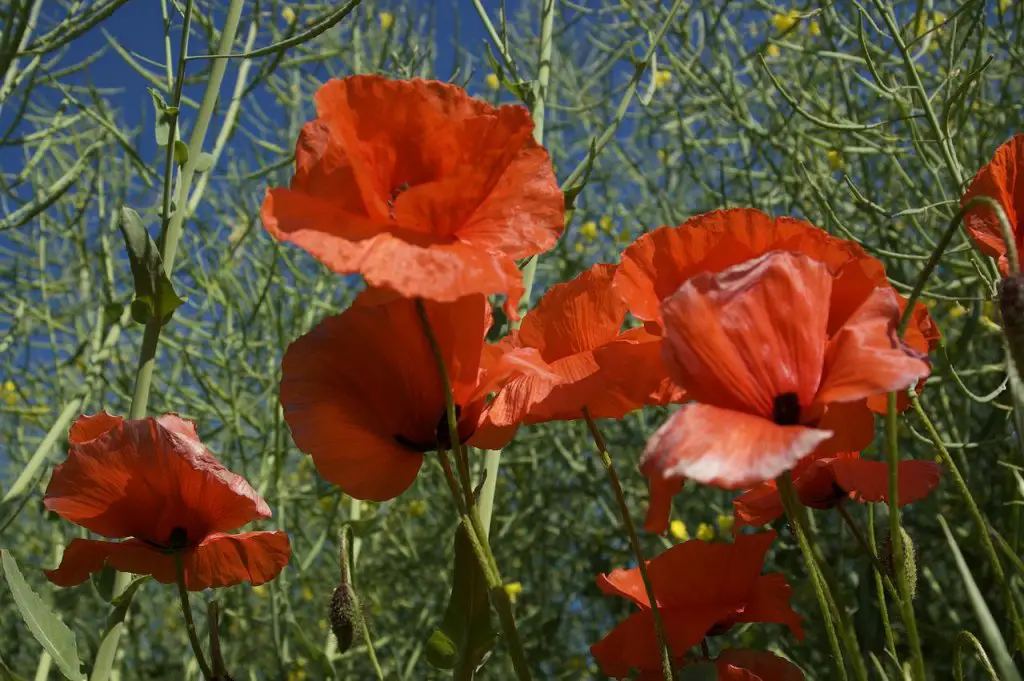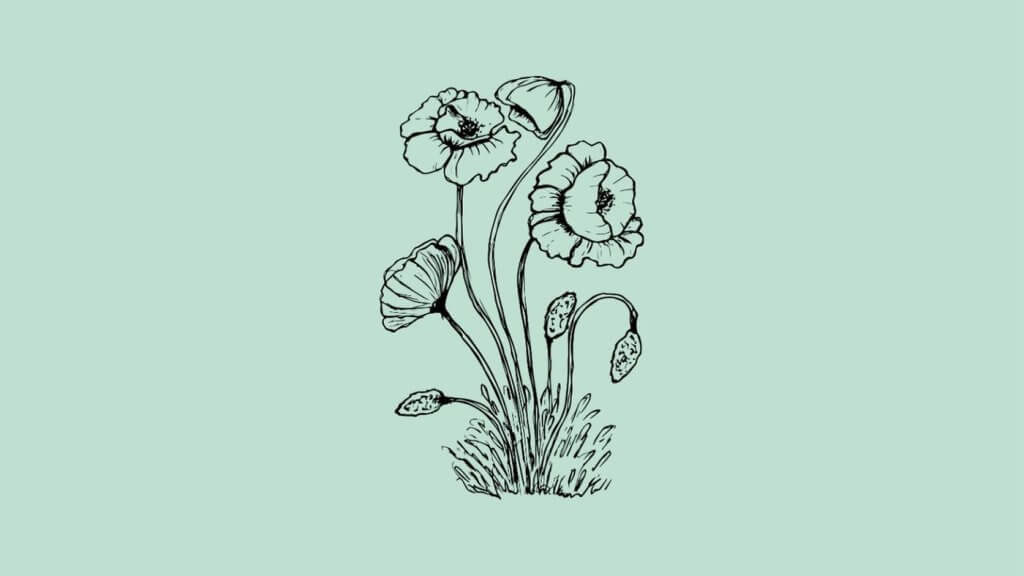Corn poppies or Papaver rhoeas are an annual flowering plants with bright red blooms, each with a bloom time of only one day. While the corn poppy has medicinal applications, it’s not an opiate. The corn poppy is edible, although caution should be used in order to avoid overdose or allergic reaction.
Papaver rhoeas: plant profile
Papaver rhoeas, known by common names:
- Corn poppy
- Common field poppy
- Common poppy
- Flanders poppy
- Coquelicot
It is an annual flowering member of the poppy family (Papaveraceae).
It produces numerous bright red blooms throughout late spring and fall, each with a bloom time of only one day. The sheer number of flowers, however, means consistent, vibrant color.
What Are You Foraging For Right Now?
We're thrilled to hear your ideas. What would you like to submit today? Feel free to share your thoughts and experiences with us.
These beautiful flowers also attract various pollinators, making them a useful addition to many garden types.
The corn poppy should not be confused with the California poppy, a separate poppy species producing orange blooms.
Check out our video on 5 plants to forage for better sleep, including California poppy.
A short historical overview
First described in 1753 by Carl Linnaeus, a Swedish botanist, the scientific name of this red poppy translates as Papaver, Latin for food or milk, and rhoeas, Greek for red.
During World War I, the common poppy grew as a wildflower throughout Europe and across the battlefields of Belgium. Upon returning from the war, soldiers recounted memories of the dramatic sight of scarlet red flowers growing across the war-torn landscape.
One such battlefield was in Flanders, Belgium, where it grew so easily that it became known as the Flanders poppy. This field served as inspiration for the poem In Flanders Fields by John McCrae.
Corn poppy identification
Although the flowers of the corn poppy are most often red, cultivars are also available in other colors, notably the Shirley poppy, which grows in shades of white and pink.
Blooms have 4-6 flower petals perched on long peduncles. There is a notable black blotch at the bottom of each petal, creating a dynamic contrast that is one of the hallmarks of this plant type.
The common poppy’s stem is covered in fine bristly hair and irregularly pinnate, toothed leaves that span roughly 6 inches in length.

Where do corn poppies grow?
The corn poppy is native to the eastern Mediterranean region and growing wildly across Europe, Africa, and Asia.
In North America, it’s considered a self-seeding annual wildflower, growing best climates associated with USDA hardiness zones 1-10.
It’s often found along roadsides, carpeting hillsides and fields, and in agricultural fields that have been tilled as long as no pesticides are present.
Are Papaver rhoeas or corn poppies opiates?
While the corn poppy has medicinal applications, it’s not an opiate.
Its white-flowered cousin, Papaver somniferum, is the poppy responsible for producing opium.
Are corn poppies poisonous in any way?
Common poppies are poisonous to animals when eaten in large quantities.
The alkaloid rhoeadine is present in the common poppy along with:
- rhoeadic acid
- papaveric acid
- reoegenine
These compounds can have a sedative effect and are responsible for the common poppy’s medicinal applications.
What is corn poppy used for?
The corn poppy is recognized for its beauty and stunning color.
The cut flowers make attractive arrangements, and the petals can be dried and used to make a red dye.
Common poppies are also known to have a variety of potential medical benefits.
Among the noted uses are:
- Use as a pain killer
- Mild sedative
- Cough relief
- Expectorant
- Treatment for digestive issues
In addition, these poppies have been occasionally used topically as a treatment for wrinkles.
Papaver rhoeas is currently being evaluated as a treatment for skin cancer.
Is the corn poppy edible?
The corn poppy is edible, although caution should be used to avoid overdose or allergic reaction.
The seeds of Papaver rhoeas do not contain the alkaloids present in the leaves and are often used in bread, cakes, salads, or as a garnish.
Although edible, the alkaloids in the plant can have adverse side effects if consumed in large quantities.
Among the potential issues resulting from overdose are:
- Irregular heartbeat
- Nausea
- Vomiting
- Loss of consciousness
How to cook with corn poppy?
The entire corn poppy plant can be eaten and has many culinary applications.
Young leaves picked before flower buds form can be eaten raw or cooked. They are often added to salad, cooked like spinach, or sprinkled into soups for flavoring.
The petals can be dried to make tea or a bright red syrup that can be added to soups or stews.
No more than two teaspoonfuls of the dried flower are recommended when consumed as a tea. The tea made from the common poppy should be consumed in moderation, no more than 2-3 times a day.
In addition to being used in baking and as a garnish, an edible oil can be derived from the seeds and used as a substitute olive oil.
How do you grow Papaver rhoeas?
The common poppy is an extremely low-maintenance plant with eye-catching flower color.
It can be added to flower beds, large open spaces, borders, or cottage gardens. It’s not well suited for containers, however.
- Common poppies do best in sunny areas with 6-8 hours of full sun.
- Although highly adaptable, the most vigorous growth will occur in rich, well-drained soil.
- These plants have minimal water needs, and overwatering can result in leggy stems and fewer blooms.
- Sowing seeds in early spring will produce summer blooms, while sowing in fall will result in spring blooms. For the most dramatic color impact, sow seeds in dense clusters.
- Once established, the common poppy is self-sowing and will return each season if the conditions are suitable.
Plant care tips
Once established in your garden, common poppies require very little attention. In fact, in an ideal location, they can spread, becoming invasive.
During the growing season, regular deadheading is recommended to gain the most blooms.
Once the season is over and the blooms begin to decline, leave some of the spent flowers intact. This will help ensure natural regrowth in the coming seasons.
Poppies do not typically require additional fertilizer as they grow, but if you are seeing more foliage than flowers, the soil may have more nitrogen and less phosphorus than required for optimal blooming.
In this case, amending the soil with a phosphorus-rich fertilizer can encourage blooming.
Lorin is a writer, photographer and nature enthusiast in Sacramento, CA. In addition to gardening, she makes a regular practice of forging for edible plants and flowers. Nature nourishes if you know where to look.

